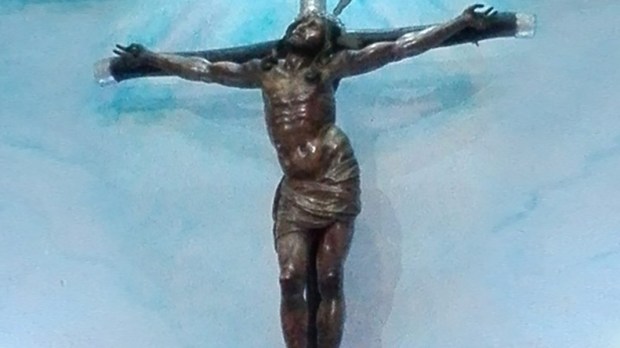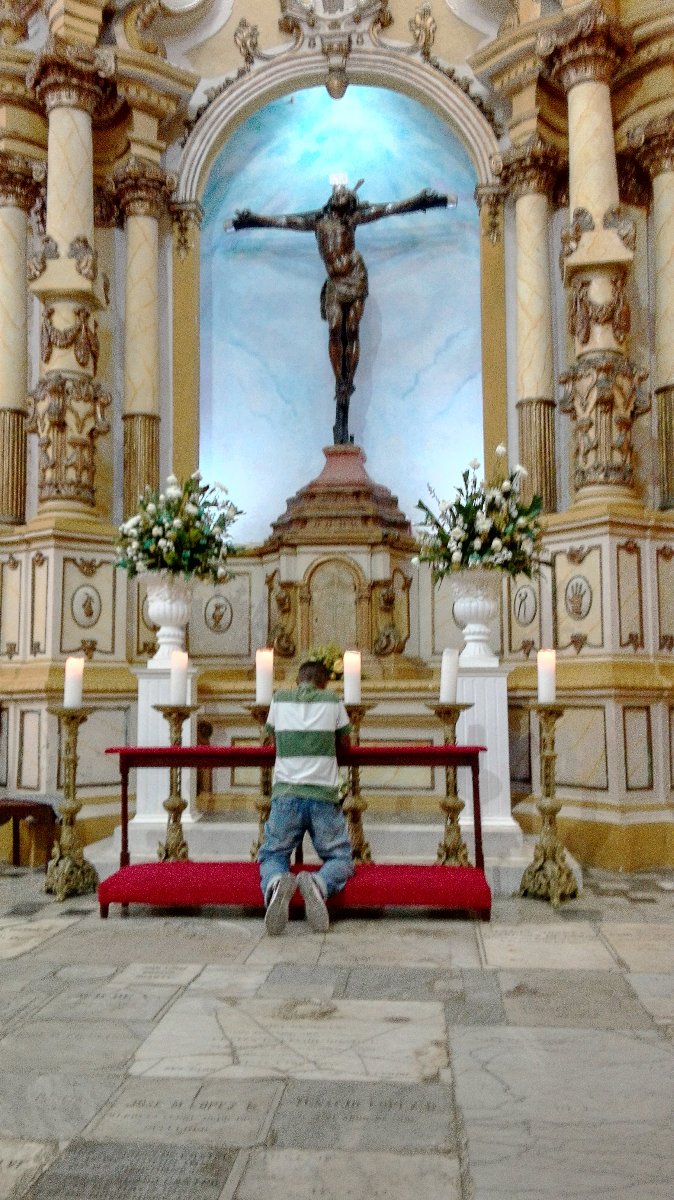The story, passed down from generation to generation and recorded in a few historical and church records, is always told the same way. In the middle of the 18th century, on a beach in Cartagena de Indias (a colonial coastal city in Colombia), a group of Dominican novices found a large piece of wood, which they took to their friary with the intention of having a statue of Christ carved out of it.
As Providence would have it, they showed the wood to an older man who was lodging at the friary at the time, and who said he was a wood sculptor from Florence, Italy. However, the dimensions of the piece of wood weren’t appealing to the artist, and he obliged the novices to throw the wood back into the sea and look for a different one that would be adequate for making a life-sized crucifix.
A few days later, the young students — whose names are unknown — found the same piece of wood on the beach, but inexplicably, it had become larger. This time, it was accepted by the sculptor, who only required two conditions in order to do the work. The first one was that they should leave him to work alone in silence in a designated room — actually one of the friars’ cells in the friary. The second condition was that his meals were to be given to him through a small window in the door of this room.
For several days, the friars and novices of the Order of Preachers only heard the saw cutting the wood, the chisels giving life to the sculpture, and the gouges cutting out the details. They saw nothing of the nameless artist but his calloused hands when he received his food and water — he who, according to the legend, had arrived hungry and clothed in rags in that city that was the principal Spanish port of the Americas. No one spoke with him or saw his face, or watched how he sculpted the body of Christ out of that worthless beam of wood.
Two weeks later, the noise of the tools ceased, the window didn’t open again, and the anticipation the religious community had felt during the first days turned into concern. According to Atilio Otero, a cultural researcher, “the religious must have been very nervous, because after just a few hours of not hearing anything in the room, they decided to knock the door down to see if the sculptor was alive or dead.”
What they found, Otero tells Aleteia, was something exceptional: an image nearly two meters tall, dark in color with bright highlights, portraying a powerful image of Jesus gazing into eternity at the moment of his supreme sacrifice. Next to the statue of Christ, neither tools were found, nor the author of the work; the food that had been provided every day for two weeks was untouched. According to a booklet published by San Pablo Publishers, the disappearance of the artist — as enigmatic as his arrival — “gave rise to the legend that he was actually an angel sent by God to make the venerated image.”
Faith and tradition
Descriptions of the image — one of many symbols of that city, which has been declared a World Heritage Site — attract Colombians and foreigners alike, who come to visit the colonial church of Santo Domingo to see for themselves whether the mysteriously carved crucifix was worthy of all the admiration.
Gustavo Arango, a famous Colombian journalist and writer, said in an article published in 1992 that the statue of Christ “is missing the wound in his side. Not even blood is depicted. This Christ doesn’t even look humiliated. His head isn’t bowed. He lifts his eyes from the earth, far from his executioners and those who pray to him, and he has a secret dialogue with a characteristic that one cannot understand without being crucified there, without being that piece of worked wood.”
It represents — as very few works of art have been able to do — the exact moment of death, the final tension of muscles and tendons, the final spasm of a body before abandoning itself, the gaze of one seeing his last vision, the last breath eternally leaving the chest of the emotionally powerful and venerated Cristo de la Expiración.


